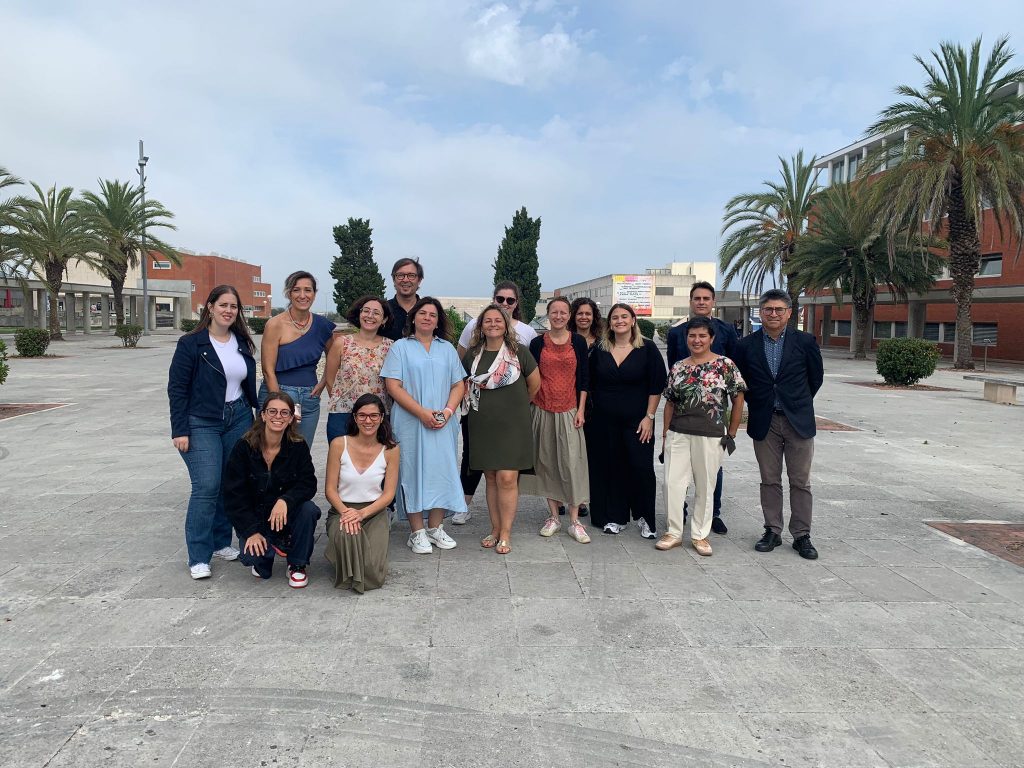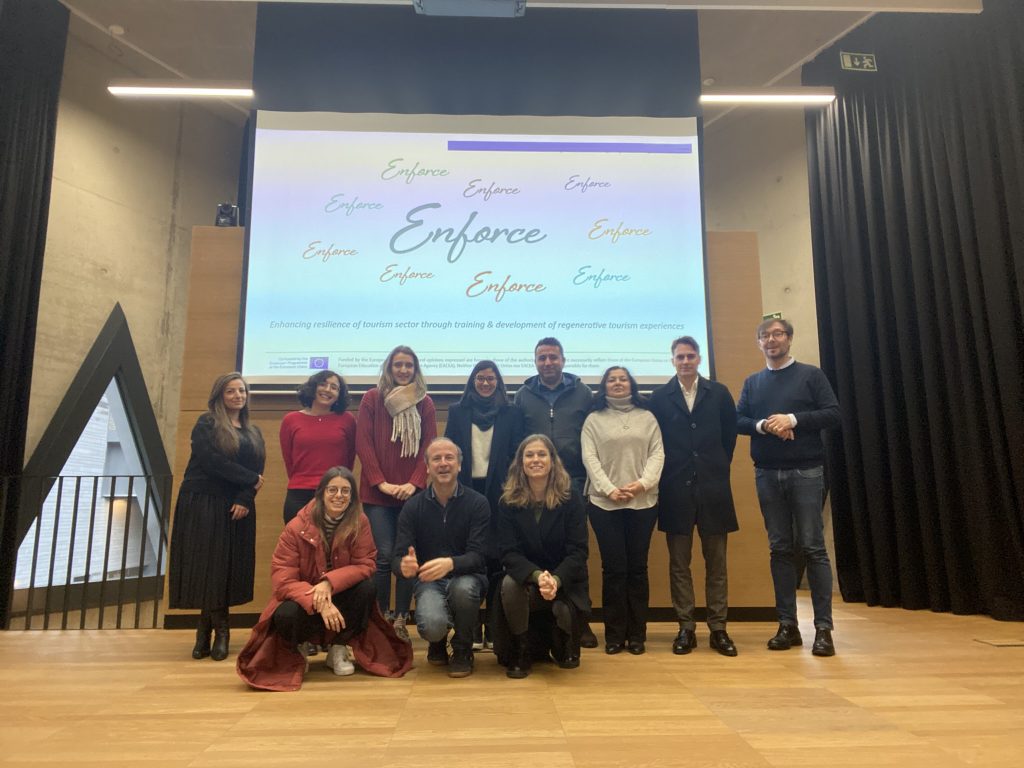After ‘sustainable’, ‘green’, ‘responsible’, ‘eco’ and ‘community’ tourism, a new term is making its way into this field: ‘regenerative’ tourism.
Unsurprisingly, the word ‘sustainable’ has been so widely used that it eventually lost meaning. And now that all tour operators’ facades have been repainted green, a new buzzword had to be found to stand out.
‘But what is regenerative tourism?’
More and more people are turning to this concept without really understanding what it entails. Yet regeneration is much more than just a trend: it’s a concept deeply rooted in the way living systems function – in other words, in the way the different parts and components of the living world co-exist and interact with each other and with their environment.
A living system – a cell, a forest or a works council – is maintained by flows of information, energy and matter.
Regeneration is the capacity of these systems to renew themselves and recover after a period of decline or disruption. It is therefore a complex process that requires a holistic approach to the world.
In the tourism sector, a regenerative approach means taking into account all the players (and associated flows) that co-exist in a place and contribute to making it a destination: travellers, residents and the environment (urban AND natural).
According to UN Tourism (formerly OMT), a tourist destination is ‘a grouping of products/services and activities/experiences along the tourism value chain’ that ‘brings together different stakeholders’ whose ‘image and identity (…) are intangible characteristics that can influence its competitiveness on the market’… In the tourism system, as it still exists today, destinations have the status of a product we are trying to sell to potential customers. You only have to visit international tourism fairs – such as the ITB in Berlin or the IFTM in Paris – where exuberance is often the order of the day, to understand that we are still a long (long) way from sustainability, and even more from a regenerative approach: the ephemeral constructions of disproportionate proportions designed to promote this or that destination and the luxury hotel show-offs stand in stark contrast to the fifteen square metres devoted to bamboo stands seeking to promote experiences that are a little more ‘sustainable’.
The concept of regeneration includes and transcends that of sustainability. Indeed, adopting a regenerative approach requires a drastic change of mindset: opening up our way of thinking and perceiving our relationship with the environment and the community, in order to gain a deeper understanding of our interconnectedness with the world around us.
When we enter a place, we become an integral part of the destination. From then on, all the interactions we have with it (by word, deed or omission) have a knock-on effect on all the elements that make up the destination. It is this vision of tourism, not as a fixed and impermeable journey but as a continuous interactive process, that can be described as regenerative.
Regeneration is therefore a process that requires us to question our beliefs and habits, and to abandon our traditional extractive mode of operation – where the forests are there to supply us and the locals are there to serve us – in order to make the transition to a system and a set of practices that promote the regeneration of our ecological, social, cultural and political systems.
“The major problems in the world are the result of the difference between how nature works and the way people think.“ – Gregory Bateson
This change in thinking also requires a change in language. The words we use – particularly in the world of tourism – carry many connotations that are easy to get caught up in. Language reflects a way of thinking, a way of seeing, prioritising and understanding our relationship with the world. Through its architecture, language promotes intrinsic values and a way of positioning ourselves in relation to our environment.
The regenerative approach requires us to think, live and (inter)act differently with the world. Consequently, old terms such as growth, stakeholders, competition, markets, consumers, products, tourism, destination, diversification, return… reflect an outdated vision. These words suggest a relationship of domination that does not fit in with an approach based on living systems. We therefore need to adapt our language if we want to align ourselves with the new values of regeneration.

Source: etourisme.info
Similarly, talking about ‘regenerative growth’ or ‘regenerative tourism’ is an oxymoron. Terms such as ‘regenerative development’ and ‘regenerative approach to tourism’ are more appropriate.
‘It’s not about tourism. It’s about regeneration. Let’s not get trapped by language. Regeneration is about recognising that we are part of a living system and that we are neither separate from nor dominant within that system. What we can do to restore and renew the system that sustains us will define our well-being and that of future generations. The tourism system needs to develop this broader systemic perspective.’ adapted from The Tourism CoLab.
Applying this paradigm shift to tourism, then, travel experiences are expected to go beyond sustainability to actively contribute to the restoration and enhancement of ecosystems – that is, the environment, local communities and cultural links. In other words, regenerative tourism is not just about (for the tourist) travelling ‘responsibly’ or (for the host) accumulating sustainable certifications, but about transforming the tourism flow into a tool that promotes regeneration.
‘If I offer waste collection outings in forests or on beaches, can I call that regeneration?’
If the experience is purely regenerative, there is no waste in the equation. Here, a regenerative approach would involve raising travellers’ awareness upstream of the vulnerability of the natural ecosystem to human pollution and the impact that waste has on the well-being of communities, particularly after a weekend of over-visiting. If it’s done properly, this kind of awareness-raising should provoke the necessary reflection in visitors, so that they themselves don’t leave their rubbish lying around. This is a subject we addressed last week at our seminar as part of the European Guide Me Green project at the Maison de la Baie de Somme with all the Grand Site de France stakeholders present.
In fact, the tourist experience begins even before travellers arrive on site. That’s where the real work lies: orchestrating the awareness and education of tourists so that they adopt behaviours that don’t harm their hosts or the environment, and that also bring them benefits.
Tourism can no longer be seen solely from the point of view of the traveller as a one-way street. The local community must be fundamentally integrated into the tourism development process. This requires an inclusive co-creation approach that involves the active participation of residents in decision-making, ensuring that the benefits of tourism (and we’re not just talking about financial benefits here) are shared equitably across the destination and contribute to improving the well-being of the community as a whole.
In this continuous interactive process, tourists no longer ‘visit’ the place, they participate in creating an experience with the destination. This is where the shift in paradigm and language mentioned above must take place. The destination is no longer seen as a place to be visited, but as an ecosystem that equitably integrates all the bodies (tourists, local communities and wildlife), the environment (natural and urban), and the flows (cultural, emotional, monetary) that evolve and/or circulate within this place. Tourism has thus been elevated from the status of a product – marketed, sanitised and monetised – to that of an experience – holistic, individual and sensorial: an experience in which we are inspired by the rich emotional bond we establish with the destination, and in which we breathe, thanks to the physical and mental space created when we can freely enjoy a simple stay in a well-designed, and therefore not over-crowded, space.
‘What does tourism look like when used in the service of regeneration?’
By developing travel experiences centred around cultural exchanges, environmental awareness, the preservation and promotion of traditions and the personal development of travellers, the players in the tourism system can help to create a genuine symbiosis between travellers and the local environment in the broadest sense.
The Tourism CoLab, one of the leading agencies in the education and promotion of regeneration, led by Dianne Dredge, PhD applied to tourism proposes 5 fundamental values to guide the development of this process:
- BALANCED. ‘Place-based, environment-focused and community-led.’
The priority is not tourism: it’s about centering the process around local people and their environment, in the belief that a local economy focused on the well-being of the destination will thrive.
- MULTI-DIMENSIONAL. ‘Co-designed with and for all.
Co-design with the diversity and balance of community interests. Favouring a long-term consultative approach, deeply engaged with the community and their vision for the destination, promoting local creativity and ingenuity.
- COLLABORATIVE. ‘Collaborative, connected and bold.’
Today’s challenges cannot be overcome by using the same approaches that initially created these problems. Overcoming these challenges requires collaborative and bold leadership, taking risks, challenging established norms, and choosing innovative and constructive approaches.
- RESPECTFUL. ‘Respect for the place’s history, identity and belonging.’
Community is an extraordinary source of strength and resilience, as well as the innovation essential to bringing about the desired change in a place.
- HOLISTICS. ‘A holistic approach to living systems.
We cannot consider tourism in isolation. It must be seen as an integral part of a wider, interconnected system. In this context, communities and places are of particular importance and need to be integrated holistically.
There are different approaches to regenerative tourism depending on whether you are a destination management organisation, an association or an SME, for example. Here are a few concrete examples of how regenerative tourism can be put into practice at different levels:
‘Closed for Maintenance’ – Faroe Islands: The Faroe Islands have launched an innovative initiative to temporarily close certain popular areas to the public to allow nature to regenerate and recover from the impacts of tourism. During this period, ‘voluntourists’, guided and supervised by members of the local community, are invited to take part in conservation projects, such as restoring paths and infrastructure, planting trees and protecting local wildlife.
‘Travel To Tomorrow’ – VisitFlanders: This strategy aims to make Flanders a thriving, resilient, sustainable and future-oriented destination offering added value to all stakeholders involved in the destination. Finding a healthy balance between what residents, visitors and entrepreneurs value and what the soul of the place demands. ‘Travel to Tomorrow’ focuses on the positive power of tourism and seeks to replace the “more, more, more” approach with a “better” and “more valuable” approach. The initiative encourages a return to the basics of travel, emphasising its qualitative and creative aspects. Tourism is seen as a means, not an end in itself, aimed at creating added value for all.

Source: Travel To Tomorrow
The Islander Way – Flinders Island: Flinders Island, Australia, has developed a unique approach to regenerative tourism with ‘The Islander Way’. This initiative focuses on enhancing and preserving local culture, history and environment. By incorporating the knowledge and traditions of local people, this project offers an immersive experience that promotes cultural and environmental regeneration while supporting the local economy.
Please note: there is no model to follow for regeneration, no list to tick off or boxes to fill in – unlike sustainability (Sustainable Development Goals, Sustainable Certification Schemes, etc.). It’s about breaking away from the traditional metric approach where success is measured in terms of indicators, KPIs and targets achieved. Although these indicators can help to take a few steps in the right direction, the emphasis on performance measurements belongs to a business model also used to sell sustainability measurement tools, and not necessarily to bring about profound change.
If properly integrated, the regenerative approach does not require indicators. There is no fixed ‘tool’ or ‘model’ that will allow us to ‘achieve’ regeneration. Regeneration is an ongoing, long-term process that can be measured in terms of progress. Sharing ideas and transferring good practice from one place to another is a very good way of progressing together, but it is essential to bear in mind that such an approach will be different for each place, each community, and each traveller.
‘If there are no boxes to tick, how do you let people know that a tourism business is regenerative?’
More and more tour operators are promoting ‘authentic’ experiences to sell an ‘immersive’ package to tourists without making them aware beforehand of the cultural differences they are about to experience. This can lead to unpleasant experiences – even traumatic for the most sensitive souls… These are the findings of the PhocusWire article ‘What Happens When Travelers Find Tours Too Authentic?
If the traveller does not take the initiative to find out about the local customs and cultural differences of the country they are visiting, it is up to the destination – and therefore all the players in the tourism ecosystem – to take over: by educating the visitor, if possible before the visit, and by being as transparent as possible in promoting the experiences on offer, we can ensure a smooth encounter for both worlds.
In the same way that some people use terms like sustainable or authentic to describe their products, we are now facing a new risk: that of regenerative greenwashing – and with it, the trap of false promises. Simply selling yourself as ‘regenerative’ is not enough to be regenerative. On the contrary, when a company sells itself as ‘regenerative’, it is often more for self-centred marketing purposes than with any real desire to contribute to the regeneration of the destination as a whole.
Then there’s the language problem again. As we have seen, terms that are repeated too often quickly lose their meaning. Words must not be confused with reality. Sustainability, Authenticity… these are just guides to point us in the right direction. So, to promote genuine regenerative experiences while standing out from the crowd, let’s stop using buzzwords, avoid clichés and focus on transparency and simplicity.
With this in mind, the European Union has adopted a proposal for a directive on green claims in March 2023: the Green Claims Directive. This initiative aims to make green claims reliable, comparable and verifiable across the EU, protecting consumers from greenwashing. It also encourages a circular and green economy by enabling consumers to make informed purchasing choices. Companies will now have to prove their environmental claims using robust, science-based methods and be verified by an independent, accredited verifier.
Let’s share our stories: those of the travellers, those of the hosts, those of the communities, and those of nature. As JoAnna Haugen says, ‘Don’t tell me that you are sustainable – Show me what that looks like’. In a world where marketing no longer has a place, storytelling is the way to set an example by highlighting concrete actions taken to promote regeneration. All while adding to the tourist experience.
One of the biggest challenges facing tourism today relates to over-visiting and, more generally, to the distribution of flows over time and space: how can we lure travellers away from the epicentre of the destination? How can we make them want to go and discover less popular places? How can we inspire and motivate visitors to explore beyond the tourist sites and immerse themselves in more meaningful experiences? By offering the means for everyone to tell their story and share their experience.
Storytelling is a powerful tool for creating engaging tourism experiences; it helps to raise awareness, it activates encounters, and it provides the immersion that is sought-after, if not unexpected. This is the approach that led to the creation of the ENFORCE PROJECT consortium (Erasmus+), on which we are working with the aim of promoting and developing storytelling skills for SMEs in the tourism sector.
The best experiences are the ones that last. The ones that remain in our memories long after the experience has ended. As a vector of emotions, the art of storytelling, when well handled, can leave a lasting impression, sometimes indelible. Stories facilitate encounters. They build bridges between people’s lives to establish connections – between visitors, with local communities, with nature – and in so doing help to forge an emotional bond with a destination.
‘So regenerative tourism is degrowth tourism?’
(Here is a question we received at a recent seminar organised with teachers from the tourism sector)
Circular tourism, degrowth tourism, sustainable tourism, regenerative tourism: these are still terms locked up in their connotations. These concepts are not distinct from one another, they are linked, they come together and they are interconnected. Regeneration is not synonymous with ‘degrowth’ in the sense that it does not tend towards a reduction in value. On the contrary, the regenerative approach encompasses and transcends the sustainable, circular and degrowth approaches, and is a source of respect and abundance for all: it’s about creating value, but in a different way.
Rethinking the very concept of value: beyond direct economic benefits, it is essential to integrate environmental, social and cultural benefits into the equation. From a regenerative perspective, value is also measured in terms of the health of ecosystems, the well-being of local communities and the preservation of cultural heritage.
The regenerative approach is proactive in revitalising ecosystems, communities and destinations by creating added value in a positive way. Through tourism, regeneration means supporting the restoration and preservation of natural habitats: added value. Encouraging inclusive economic development by promoting local employment, supporting small businesses and enhancing cultural and craft traditions: added value. Promoting authentic and enriching tourist experiences and encouraging environmental and cultural education, enabling visitors to better understand and appreciate the natural and cultural riches of the places they visit: Added value!
Regenerating means learning to make the most of what can be regenerated. Regenerating through tourism means creating a virtuous circle where travellers, local communities and nature can coexist harmoniously, while generating mutual benefits: Creating value differently. From then on, we’re no longer talking about tourism, but about a fully-fledged regeneration process.
So no! The future of tourism doesn’t need any qualifiers, as long as it’s a place where everyone can come together in a destination, in a region, as long as it’s part of a system of progress and shared values, different but balanced. On the other hand, it needs committed players who are inclusive in their approach, driven by a long-term vision that involves visitors and their guests to a very large extent.
About the author :
A recent graduate of EDHEC Business School’s Grande Ecole Programme, with an MSc in Creative Business and Social Innovation, Maeva Cabanis is a dynamic professional with a passion for nature tourism and regeneration. Seeking to put her convictions into practice through her experience, Maeva joined EURAKOM in November 2022. After seven months of digital nomadism across South-East Asia, she familiarised herself with the world of travel and became an expert in collecting best practices in regenerative tourism. Back in Europe, Maeva Cabanis took on the role of junior project and communications manager, participating in the development of numerous European projects linked to the promotion of sustainable and regenerative tourism.







